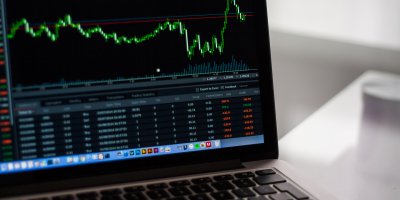
Catcha Group have shared their predictions of the future of SEA tech scene for the next 24 months | Source: Shutterstock
What you need to know about SEA’s evolving tech scene
LAST YEAR was exciting for technology companies and enthusiasts alike.
Artificial intelligence applications topped the charts, smart technology flourished, influencer marketing grew by leaps and bounds, and blockchain technology made headlines.
These trends have had an immense impact on every corner of the globe. But what’s in store for the tech-scene in Southeast Asia (SEA) in 2018?
Catcha Group, SEA’s leading Internet group, has recently released a report detailing their predictions on the direction of the region’s tech scene over the next 24 months.
SEA will have 460 million Internet users and will raise US$10 billion in private tech funding by the end of 2019
Internet users in SEA have long been exceeding that of major countries such as Japan, the UK, and Russia. And 2017 saw SEA race ahead of the number of Internet users in the US. Catcha estimates that this rate will continue to grow, leading to around 460m Internet users in SEA by the end of 2019. As a result, a huge market will be created that attracts private tech funding from both regional and foreign investors.
The first Decacorn will emerge from the region
Assuming that the previous prediction of SEA Internet users reaching 460m by the end of 2019 is correct, this will be similar to the rates of China in 2010, at 456 million users. By using China as a proxy and inferring a relationship between the number of Internet users and the resulting valuation of the leading tech companies, the Catcha Group has come up with an estimation for SEA.
With an estimated combined valuation of the leading SEA tech companies (Baidu, Alibaba, and Tencent) at U$94.5 billion, it is predicted that the average valuation of each of these companies could go up to US$12.4 billion. Thus, 2019 could see the creation of the regions first group of Decacorns (defined as those companies achieving a valuation of more than US$10 billion).
A new unicorn will be built in less than three years from launch
Rocket Internet’s entrance into SEA brought with it a wealth of capital and talent into the market. Further, the introduction of Amazon Web Services’ (AWS) has significantly lowered the cost of starting up a tech company. Both of these milestones have had a tremendously positive impact on the start-up market.
According to Catcha, the amount of time taken to build a large tech-company has significantly reduced. With a combination of the right capital, talent, and infrastructure SEA can expect to see a unicorn that will be built in less than three years from launch.
Chinese companies remain the largest source of tech funding
Over the past few years, we have seen the trend of Chinese companies becoming the biggest providers of capital to SEA-based private tech companies. Last year alone, they led three of the biggest deals in the region, with a total investment of US$4.3 billion. This represented 72 percent of the total deal value in 2017. The trend is set to continue, with China expecting to remain as the largest source of tech funding in SEA.
At least 2 more IPOs in excess of U$500 million
2017 was a big year for SEA tech-IPOs. Two SEA tech companies successfully executed an IPO at Unicorn valuations for the first time ever. The Sea Group issued an IPO on the New York Stock Exchange at a valuation of US$4.9 billion and Razor issued an IPO on the Hong Kong Stock Exchange at a US$4.4 billion valuation.
Based on this, Catcha predicts that at least two more IPOs in excess of US$500 million will be issued by tech companies in SEA within the next 24 months.
Consolidation of the SEA tech landscape: there will be 2 acquisitions in excess of $500m
With leading tech companies in SEA raising more capital at larger valuations, the expectations of growth by investors is also increasing. But according to Catcha, strictly organic growth will not be sufficient. Instead, these companies will need to utilize M&A as a growth engine.
Utilizing M&A for growth has been demonstrated by the likes of Grab and Go-Jek, who have been acquiring payment companies as they attempt to expand their services and take advantage of their large user base.
With a large pool of high-quality startups in SEA as potential targets, in the next 24 months, we will expect to see an increase of unicorns and corporates using mergers and acquisitions (M&A) to grow.
Corporates and governments in SEA to invest at least US$1 b illion in the startup ecosystem
With the tech scene booming, governments and corporates are increasingly finding ways to engage with the tech ecosystem in order to stay relevant in the digital era. The Malaysian and Singaporean government are notably active in encouraging the building of the startup ecosystem through the offer of incentives (both financial and non-financial).
Further, corporates in SEA are exploring various ways to partner with, invest in, or acquire startups that align with their business strategy.
Based on this, Catcha predicts that over the next 24 months, corporates and governments in SEA will invest at least US$1 billion into the tech ecosystem.
At least one SEA country will accept/ issue a virtual currency as a legal tender
Cryptocurrencies are perhaps the hottest topic in tech right now. Though not so positively viewed by regulators who wish to have more oversight over the flow of funds, digital currencies have the potential to be a significant enabler of attaining a cashless society.
With public interest and adoption of digital currencies increasingly growing, it seems governments in SEA are becoming more accepting of it. Though these haven’t been fully embraced as yet, Catcha predicts that it won’t be long until a SEA country adopts a virtual currency as legal tender.
READ MORE
- Ethical AI: The renewed importance of safeguarding data and customer privacy in Generative AI applications
- How Japan balances AI-driven opportunities with cybersecurity needs
- Deploying SASE: Benchmarking your approach
- Insurance everywhere all at once: the digital transformation of the APAC insurance industry
- Google parent Alphabet eyes HubSpot: A potential acquisition shaping the future of CRM










